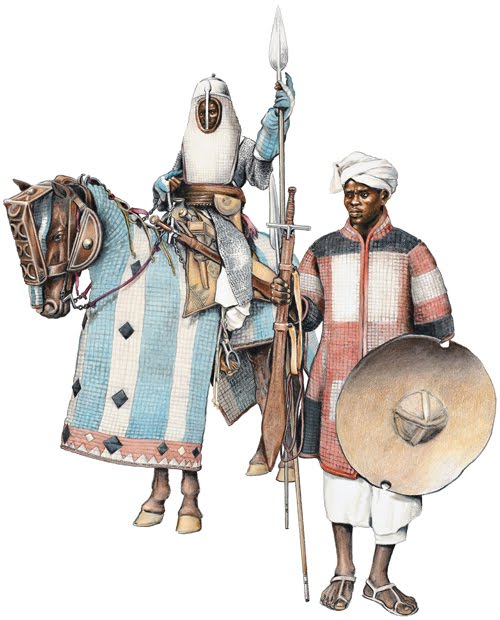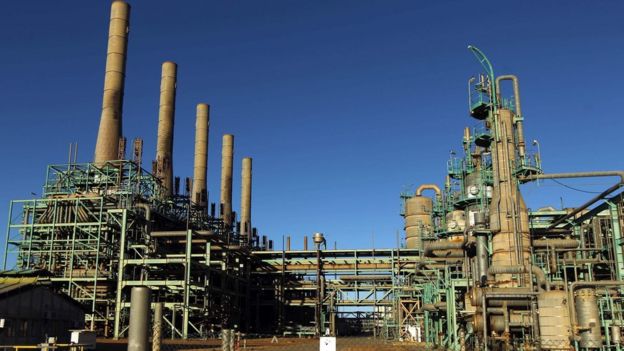The Odum of Ala Igbo
Hail Biafra!
Part III
In February 2013, the U.S. also began flying Predator drones out of Niger’s capital, Niamey. A year later, Captain Rick Cook, then chief of U.S. Africa Command’s Engineer Division, mentioned the potential for a new “base-like facility” that would be “semi-permanent” and “capable of air operations” in that country. That September, the Washington Post’s Craig Whitlockexposed plans to base drones at a second location there, Agadez. Within days, the U.S. Embassy in Niamey announced that AFRICOM was, indeed, “assessing the possibility of establishing a temporary, expeditionary contingency support location in Agadez, Niger.”
Earlier this year, Captain Rodney Worden of AFRICOM’s Logistics and Support Division mentioned “a partnering and capacity-building project... for the Niger Air Force and Armed Forces in concert with USAFRICOM and [U.S.] Air Forces Africa to construct a runway and associated work/life support area for airfield operations.” And when the National Defense Authorization Act for Fiscal Year 2016 was introduced in April, embedded in it was a $50 million request for the construction of an “airfield and base camp at Agadez, Niger... to support operations in western Africa.” When Congress recently passed the annual defense policy bill, that sum was authorized.
According to Brigadier General Donald Bolduc, the head of U.S. Special Operations Command Africa, there is also a team of Special Operations forces currently “living right next to” local troops in Diffa, Niger. A 2013 military briefing slide, obtained by TomDispatch via the Freedom of Information Act, indicates a “U.S. presence” as well in Ouallam, Niger, and at both Bamako and Kidal in neighboring Mali. Ouagadougou, the capital of Burkina Faso, a country that borders both of those nations, plays host to a Special Operations Forces Liaison Element Team, a Joint Special Operations Air Detachment, and the Trans-Sahara Short Take-Off and Landing Airlift Support initiative which, according to official documents, facilitates “high-risk activities” carried out by elite forces from Joint Special Operations Task Force-Trans Sahara.
On the other side of the continent in Somalia, elite U.S. forces are operatingfrom small compounds in Kismayo and Baledogle, according to reporting byForeign Policy. Neighboring Ethiopia has similarly been a prime locale for American outposts, including Camp Gilbert in Dire Dawa, contingency operating locations at both Hurso and Bilate, and facilities used by a 40-man team based in Bara. So-called Combined Operations Fusion Centers were set up in the Democratic Republic of Congo and South Sudan as part of an effort to destroy Joseph Kony and his murderous Lord’s Resistance Army (LRA). Washington Post investigations have revealed that U.S. forces have also been based in Djema, Sam Ouandja, and Obo, in the Central African Republic as part of that effort. There has recently been new construction by Navy Seabees at Obo to increase the camp’s capacity as well as to install the infrastructure for a satellite dish.
There are other locations that, while not necessarily outposts, nonetheless form critical nodes in the U.S. base network on the continent. These include 10 marine gas and oil bunkers located at ports in eight African nations. Additionally, AFRICOM acknowledges an agreement to use Léopold Sédar Senghor International Airport in Senegal for refueling as well as for the “transportation of teams participating in security cooperation activities.” A similar deal is in place for the use of Kitgum Airport in Kitgum, Uganda, and Addis Ababa Bole International Airport in Ethiopia. All told, according to the Defense Logistics Agency, the U.S. military has struck 29 agreements to use airports as refueling centers in 27 African countries.
Not all U.S. bases in Africa have seen continuous use in these years. After the American-backed military overthrew the government of Mauritania in 2008, for example, the U.S. suspended an airborne surveillance program based in its capital, Nouakchott. Following a coup in Mali by a U.S.-trained officer, the United States suspended military relations with the government and a spartan U.S. compound near the town of Gao was apparently overrunby rebel forces.
Most of the new outposts on that continent, however, seem to be putting down roots. As TomDispatch regular and basing expert David Vine suggests, “The danger of the strategy in which you see U.S. bases popping up increasingly around the continent is that once bases get established they become very difficult to close. Once they generate momentum, within Congress and in terms of funding, they have a tendency to expand.”
To supply its troops in East Africa, AFRICOM has also built a sophisticated logistics system. It’s officially known as the Surface Distribution Network, but colloquially referred to as the “new spice route.” It connects Kenya, Uganda, Ethiopia, and Djibouti. These hubs are, in turn, part of a transportation and logistics network that includes bases located in Rota, Spain; Aruba in the Lesser Antilles; Souda Bay, Greece; and a forward operating site on Britain’s Ascension Island in the South Atlantic.
Germany’s Ramstein Air Base, headquarters of U.S. Air Forces Europe and one of the largest American military bases outside the United States, is another key site. As the Intercept reported earlier this year, it serves as “the high-tech heart of America’s drone program” for the Greater Middle East and Africa. Germany is also host to AFRICOM’s headquarters, located at Kelley Barracks in Stuttgart-Moehringen, itself a site reportedly integral to drone operations in Africa.
In addition to hosting a contingent of the Marines and sailors of Special-Purpose Marine Air-Ground Task Force Crisis Response-Africa, Sigonella Naval Air Station in Sicily, Italy, is another important logistics facility for African operations. The second-busiest military air station in Europe, Sigonella is a key hub for drones covering Africa, serving as a base for MQ-1 Predators and RQ-4B Global Hawk surveillance drones.
The Crown Jewels
Back on the continent, the undisputed crown jewel in the U.S. archipelago of bases is indeed still Camp Lemonnier. To quote Secretary of Defense Ashton Carter, it is “a hub with lots of spokes out there on the continent and in the region.” Sharing a runway with Djibouti's Ambouli International Airport, the sprawling compound is the headquarters of Combined Joint Task Force-Horn of Africa and is home to the East Africa Response Force, another regional quick-reaction unit. The camp, which also serves as the forward headquarters for Task Force 48-4, a hush-hush counterterrorism unit targeting militants in East Africa and Yemen, has seen personnel stationed there jump by more than 400% since 2002.
In the same period, Camp Lemonnier has expanded from 88 acres to nearly 600 acres and is in the midst of a years-long building boom for which more than $600 million has already been awarded or allocated. In late 2013, for example, B.L. Harbert International, an Alabama-based construction company, was awarded a $150 million contract by the Navy for “the P-688 Forward Operating Base at Camp Lemonnier.” According to a corporate press release, “the site is approximately 20 acres in size, and will contain 11 primary structures and ancillary facilities required to support current and emerging operational missions throughout the region.”











